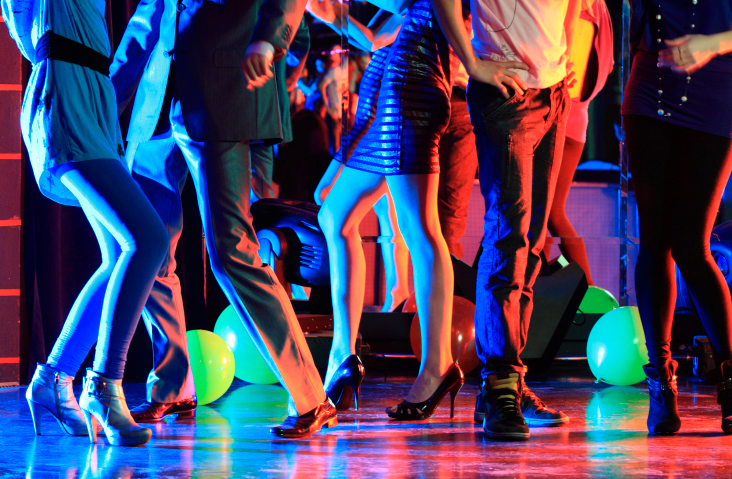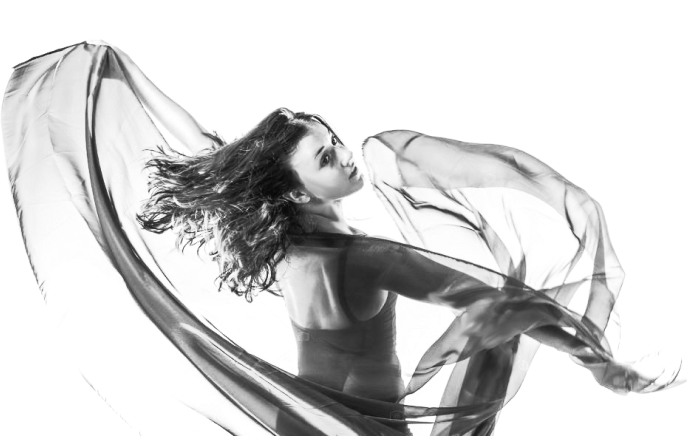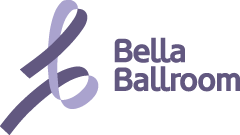
Social Dance
Nightclub Dancing / Freestyle Dancing
Nightclub dancing, by our definition, refers to solo or freestyle dancing. This type of dancing can be done solo, with a partner, or in a group. People do this type of dancing in a night club type setting or at a social event like a wedding or party.
History of Night Club Dancing
The history of the nightclub dates back to the early 1900s. When night club venues appeared in Europe and the USA in the early 20th century, venues sold alcohol, although sometimes done illegally, and provided entertainment in the form of live music, dancing girls, and other small stage vaudeville performances including magicians, comedy, freak shows, and variety sketches. Throughout the 20th century, the number of nightclubs grew with a rapid growth after the Second World War. The youth were particularly fond of nightclubs and enjoyed showcasing products including fashion and music associated with their lifestyle and image.
In the 1920s, the French had nightclubs called discotheques, but when the Nazis invaded, they outlawed certain types of music like jazz and closed the dance clubs. After WWII ended, the discotheques went underground and became secretive and hard to find. Club-goers had to be “in the know” or learn about the clubs’ whereabouts through word-of-mouth. After some time, the concept of the discotheque travelled to New York, and it became the realm of the elite. Very expensive entry fees and yearly dues kept everyone out except for the wealthy. This started to change during the 1960s when Richard Burton’s ex-wife used her divorce settlement to open her own club, Arthur. She created it to fight against the concept of the discotheque—fashion and spirit were required to get in, not just money. The 1960s brought young people to gather to dance in venues playing rock and roll music by both live bands and disc jockeys.
By the late 1970s, many of the major cities in the U.S. had successful disco dancing club scenes. The DJs would play up to 15 hours of music in a row without a break so the dancing could be kept going all night long. During this time the term “discotheque” was abbreviated to “disco” and “disc jockeys” became known as “DJs.” Dance crazes and fashions trending in bright colors and sequins were born. Disco lights featuring strobe and flashing lights were used for ambience and dry ice was used for smoke effects. DJs were able to play music without interruption with the development of technology. Mixers integrated electronica, funk, soul, and reggae to create a hybrid of music. Hip-hop developed in the 1970s and made its way into the night club scene. Break dancers became a part of the night club scene with the introduction of hip-hop.
The 1980s brought a variety of new musical genres into the nightclubs. Nightclub attendees sought goth, house, hiphop, indie, raga, techno, and garage music out. House music grew to be the most celebrated subgenre in the nightclub culture, stemming from Chicago in the mid 1980s. The high-energy rhythmic dance music was first embraced by the gay community and eventually took hold in most major urban cities in both Europe and USA. Laser light effects were introduced into the nightclub scene to create a party ambience within dance venues.
The late 1980s and early 1990s gave rise to house music hybrids. The rave scene birthed sub-genres of electronic dance music (EDM.) Clubs popularly featured mainstream pop, house, techno, rock, heavy metal, indie, and alternative music. Some nightclubs became known for specializing in a specific type of music genre.
Night Club And Freestyle Dancing Today
Today, nightclub dancing is much more varied than it was in the past. There are many types night clubs playing a large variety of different music. In our area, nightclubs in Orange County play Top 40, house music, country, oldies, techno, hip-hop, Disco and more. Some nightclubs also cater to the partner dancing scenes and so there are Salsa dancing nightclubs, Swing dancing clubs, and night clubs for Ballroom and Latin dancing.
Electronic Dance Music (EDM) has become one of the most popular and supported musical genres in the nightclub community today. The 2000s birthed new sub genres of EDM including bassline, dub-step, trap, electro. Electronic Dance Music is featured in nightclubs across the United States and Internationally. The electronic dance scene has become so large that EDM festivals are produced around the world hosting hundreds of thousands of music and dance fans. DJs, laser light shows, fireworks, acrobatic, dancing and theatrical performers, colorful costumes, and huge venues are common culture to the EDM festival. Dancers can be seen free style dancing pulling on a variety of dance styles including hip-hop, tutting, waving, shuffling, breakdancing, and more.
Nightclubs and music festivals popular with dance seekers also feature top 40, hip-hop, funk, 80s, 90s, country, and other music genres popularly. Clubs usually have a cover fee to enter the event and often times there is a dress code. Guest lists allowing certain attendees to enter the club at a reduced rate or for free are sometime offered by nightclubs. Club goers are often able purchase a VIP table that offers bottle service. This is a popular option for special celebrations, those with a lot of money, or for those wanting a little more space to dance when the dance floor is too crowed.
Dance crazes come and go in the night club scene where club attendees all join in on the same simple choreography, such as the Macarena or the Dougie, but most of dancing done at clubs is solo free style dancing. A group of people can form a circle, where one person will dance in the center and show off their dance skills. Occasionally a dance “battle” will break out in where two dancers go head-to-head in an improvised dance competition. Most commonly everyone in the club gets out on the dance floor and does his or her own individual dance in the company of everyone else on the floor. Partner dancing is usually in a loose free form where two (or more) people will interact and follow each other loosely with their dance moves.
Popular Nightclub and Freestyle Dancing Music
- “Celebration” Kool and the Gang
- “Park Rock Anthem” LMFAO
- “Twist and Shout” The Beatles
- “Brick House” Commodores
- “Don’t Stop Believing” Journey
- “I Gotta Feeling” Black Eyed Peas
- “Poker Face” Lady Gaga
- “Forever” Chris Brown
- “Don’t Stop ‘Til You Get Enough” Michael Jackson
- “Baby Got Back” Sir Mix A Lot
- “On My Way” Axwell and Ingrosso
- “Single Ladies” Beyonce
- “Don’t Look Down” Martin Garrix featuring Usher
- “Firestone” Kygo feat. Conrad
- “Hey Mama” David Guetta feat. Nicki Minaj and Afrojack
- “Waiting for Love” Avicii
- “Five More Hours” Deorro and Chris Brown
- “Where Are U Now” Diplo & Skrillex feat. Justin Bieber
- “The Nights” Avicii
- “Rather Be” Clean Bandit feat. Jess Glynne
- “You Know You Like It” DJ Snake and Aluna George
- “I Want You To Know” Zedd featuring Selena Gomez
- “Turn Down For What” Lil’ Jon and DJ Snake
- “Outside” Calvin Harris featuring Ellie Goulding
- “Real Love” Clean Bandit and Jess Glynne
- “Uptown Funk” Mark Ronson featuring Bruno Mars
- “Sugar” Maroon 5
- “Another One Bites the Dust” Queen
- “Lucy” Jason Mraz
- “OMG” Usher
- “Back in Time” Pitbull
- “Brick House” Commodores
- “Night Fever” Bee Gees
- “Old Time Rock and Roll” Bob Seger
- “Butterfly” Crazy Town
- “Dancing Queen” Abba
- “Don’t Cha” The Pussycat Dolls
- “Don’t Stop Believing” Journey
- “Every Morning” Sugar Ray
- “Billie Jean” Michael Jackson
- “Sauvamente” Elvis Crespo
- “Teach Me How to Dougie” Cali Swag District
- “Tik Tok” Kei$ha
- “I Need to Know” Marc Anthony
- “In Da Club” 50 cent
- “Just Dance” Lady Gaga
- “YMCA” Village People
- “Whoomp There It Is” Tag Team


